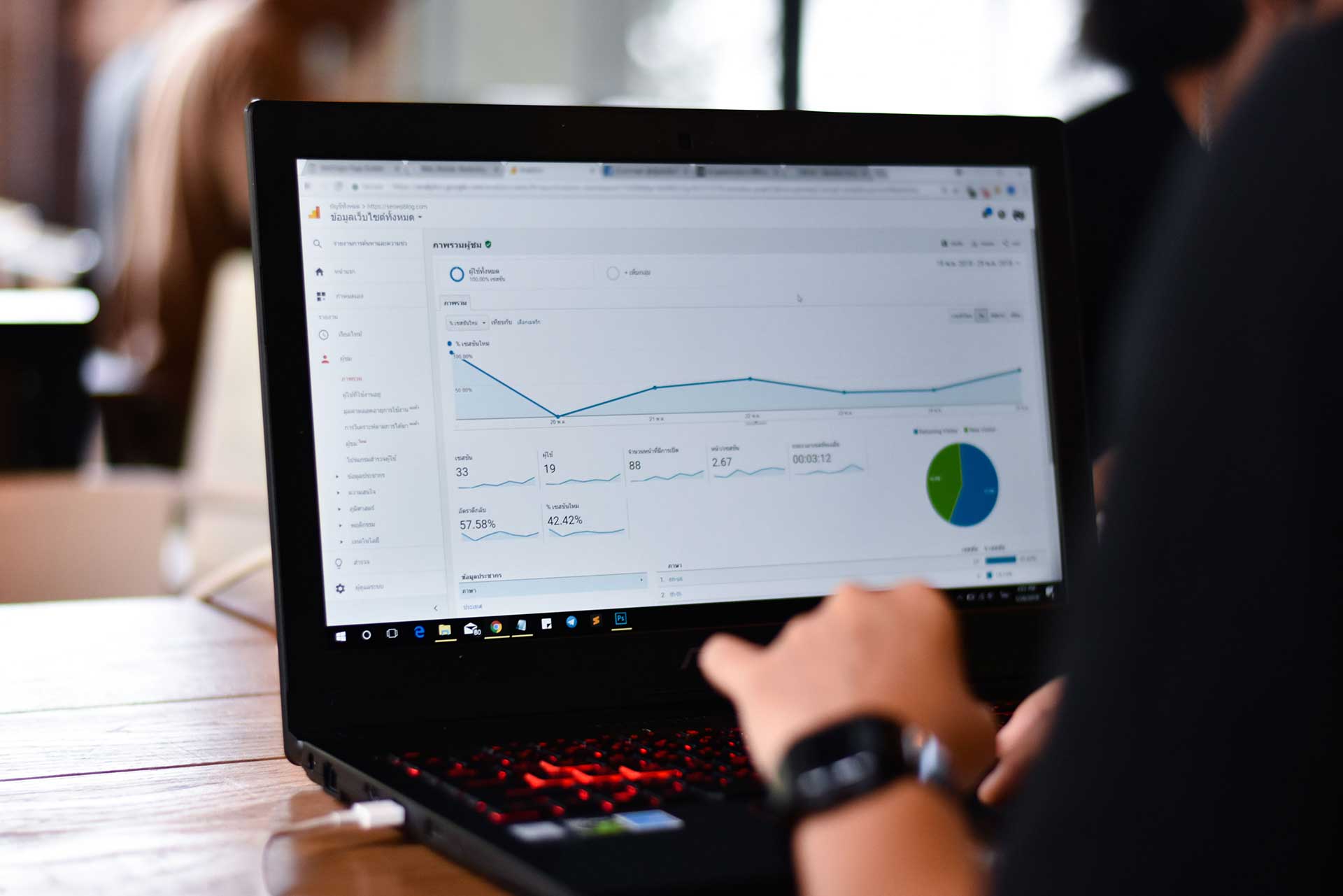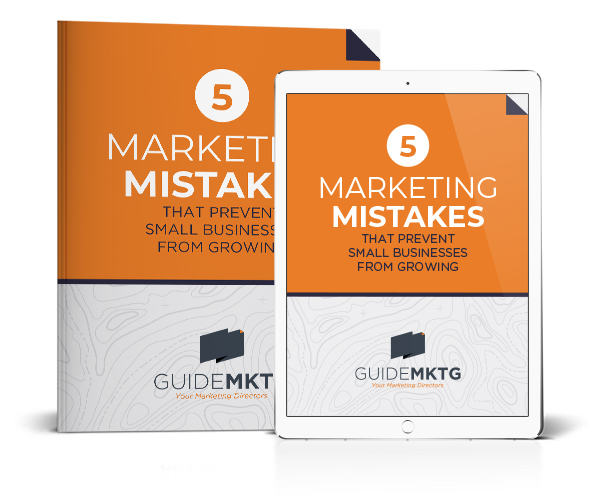Are you a small business owner looking to take your advertising to the next level? Running Google Ads can help you get in front of your target market. However, figuring out how to run your first ad is a little daunting. This Google Ads tutorial for newbies explains everything you need to know about running and optimizing your first Google Ad.
What are Google Ads? How Do They Work?
Have you ever done a Google search when you wanted to find a solution to a problem or buy a new product? (Unless you live off the grid on a coffee farm in Costa Rica, I’d guess that you have.)
If you look closely, the first search results that come up often have the words “sponsored” or “ad” next to them. Those are Google Ads.
Companies are paying to have their website show up at the top of the search results list when someone searches for a specific keyword or phrase.
For example, if you search for “vacations in Costa Rica” (because living off the grid on a coffee farm doesn’t sound too bad) the first few results you see are ads like this one:
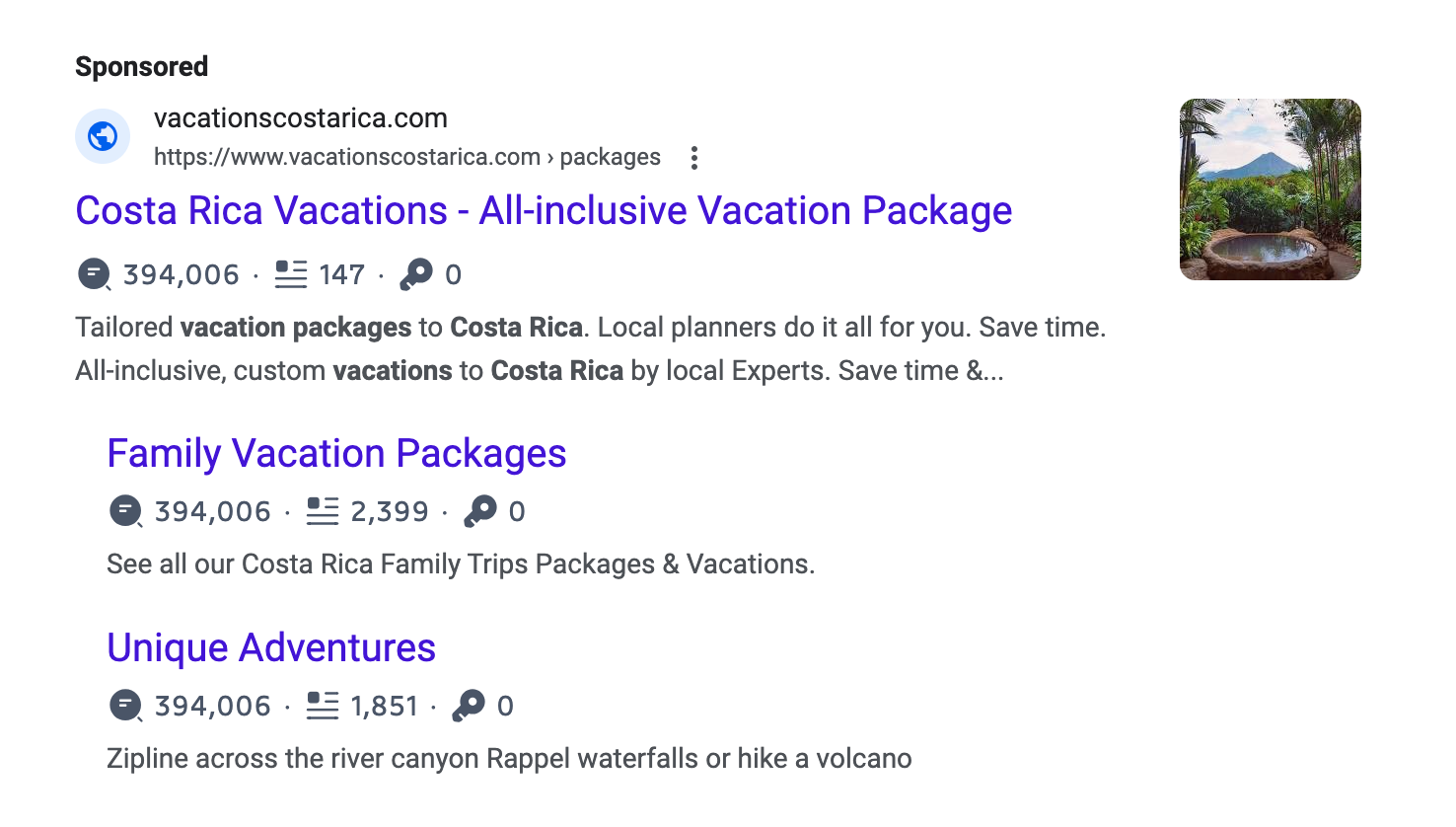
Google Ads operates on a pay-per-click model, meaning these businesses only pay when a user clicks on their ad. Google decides who to show your ads to based on the keywords, demographic information, and budget you set.
If you scroll down a little further, you will find the first organic search results. These posts have used SEO to appear near the top of the list without having to pay for their spot.
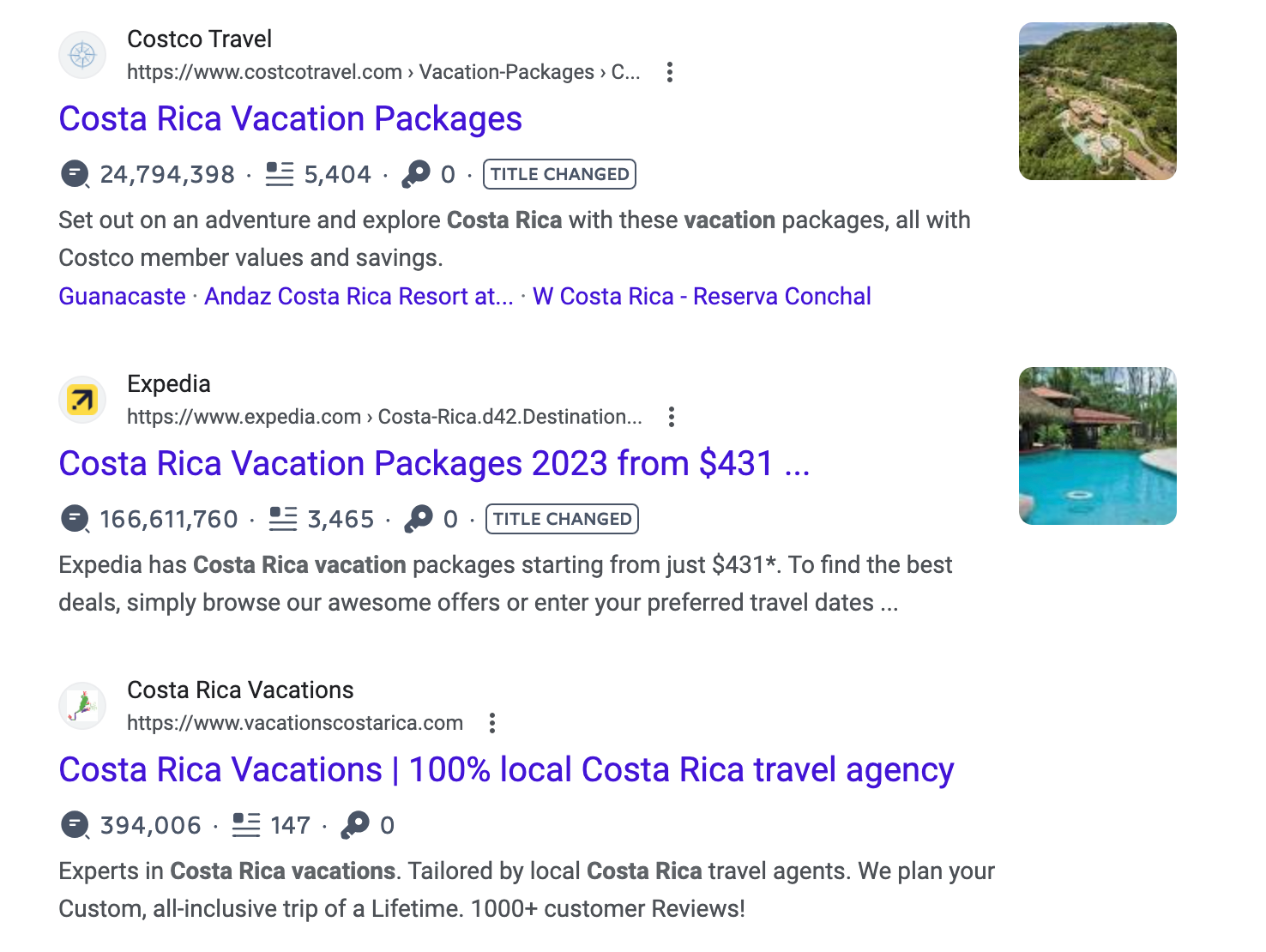
Who Should Use Google Ads?
To be blunt, Google Ads are not a good fit for all businesses.
Before you can run a Google Ad, you need to have a website, or at the very least, a high-quality landing page. The best practice would be to also have an automated sales funnel connected to that landing page. This ensures your ads are leading people into a proven marketing funnel that you already know converts well.
You also need to know the value of bringing in a new customer so that you can set a realistic budget. Do some calculations to see how much revenue the average customer brings to your business. Then, decide how many new customers your ad would need to bring in to offset your expenses.
If it would take an unrealistic amount of conversions to recoup your ad costs, social media ads might be a better place to start because they offer a lower cost per click.
Ultimately, ads aren’t a guaranteed shortcut to success. It takes a lot of trial and error to run a successful ad. If the budget is tight, skip the ads for now and rely on other lead generating techniques instead.
A Newbie’s Guide to Setting Up Your First Google Ad
Now that you know how Google ads work and if they are a good fit for your business, it is time to jump into the good stuff- how to set up and optimize your first Google Ad.
Step 1: Create a Google Ads Account
If you don’t have one already, you’ll need to create a Google Ads account. Thankfully, it is a pretty simple process that shouldn’t take more than five minutes.
First, you will enter basic information about your company. Then, you will have the opportunity to link any related accounts, like your Google Business Profile. After that, you officially exist in the Google Ads world and are ready to set up your first ad.
Step 2: Choose Your Ad Type
The first step in any marketing campaign is to determine your overarching goal.
Google gives you a simple list of options. For the easiest setup, you can pick one of the options from the list and follow the prompts to set up your ad.
However, if you want to get the most momentum for your money, you are going to have to skip the training wheels and set up your ad manually. Down at the very bottom, click “view more goal types”. This will give you more advanced options to customize your ad.
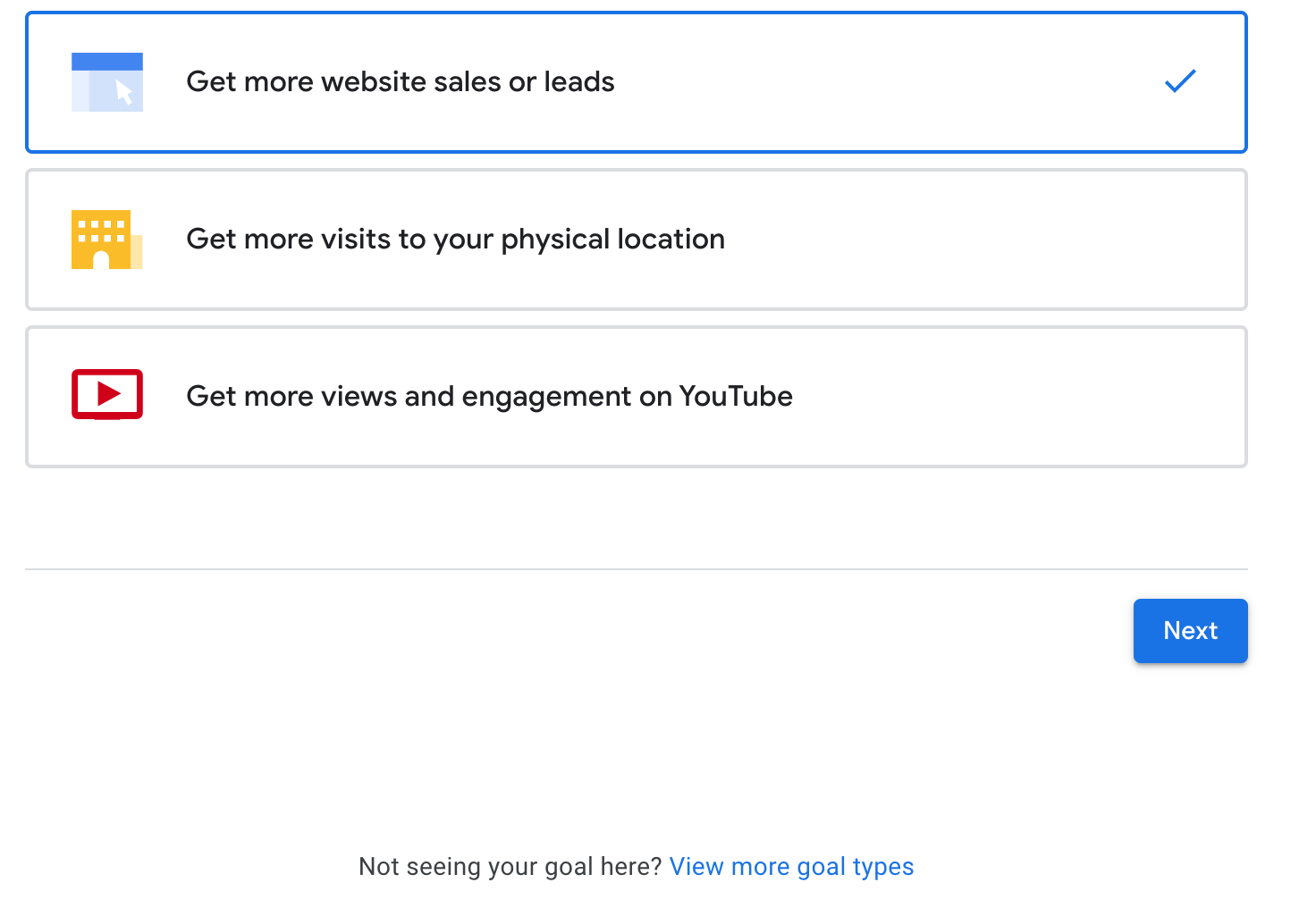
From this longer list of goals, pick the option that best fits your goal.
Pro Tip: If you have a low-cost offering, you might be able to get sales directly from an ad. However it is almost always better to pay for leads instead of sales.
Signing up for a free offering or scheduling a free consultation is a much easier yes than jumping right into a service that costs thousands. If your ad points to a lead generator,.you can use email marketing to build a relationship with those new leads over time and close the sale when your ideal customer is ready.
Step 3: Create Your Ad
It is finally time to create your ad! This is by far the biggest, most time-consuming step. Don’t get discouraged. Once you make it through this piece you are almost to the finish line.
I recommend writing out your ad copy and headlines ahead of time so that you aren’t throwing something together in a rush.
The words in your ad are the key to convincing people to use your product or service. They need to be well thought out and compelling.
At the time this post was written, the Google Ads platform allowed space for:
- 5 30-character headlines
- 5 90-characters headlines
- 1 60-character description
- 4 90-character descriptions
Even though it may sound like just a bunch of extra work to include that many headlines and descriptions, filling in all the available slots will allow Google to do A/B testing with your ads and provide you with data around what works best for your audience.
Headlines vs Descriptions
Since both the headline and description slots are pretty small, it can be confusing to know what information to include in each section.
A headline is the first thing a potential customer sees, and it can make or break your ad’s success. Around 80% of the people scrolling past your ad will read the headline but only 20% of them will bother to read the rest of the copy. That means your headlines have to be eye-catching scroll stoppers.
Descriptions, on the other hand, provide a brief snapshot of your product or service, reinforcing the headline and further convincing the reader to click your call to action. The description is the bulk of your ad copy. You have to be concise and to the point so you can express the full benefit of your product or service in just a few characters.
Tips for Writing Headlines and Descriptions:
- Highlight Your Unique Offer: What sets your product or service apart from the competition?
- Use Numbers and Statistics: Numbers and data grab attention and lend credibility to your ad.
- Include Keywords: What words are your potential customers searching for when they see your ad? Include those words within the ad to show that your business has the answer they are looking for.
- Create Urgency: When appropriate, use time-sensitive language to encourage immediate action.
- Start With Action Verbs: Begin your headlines with a strong, persuasive verb.
Add Images and Logos
Choosing the right images, logos and videos for your Google Ad will significantly impact your campaign’s success. Your images should complement the message of your ad, not distract from it.
You want to use high-quality photos that you own or can legally publish. These images should illustrate the benefits of your product or service and help tell the story of the transformation that people can experience after working with your company.
For a plumbing company, this could be an image of happy people inside a bathroom without leaks. For a restaurant, it could be a couple enjoying a beautiful meal together.
You want your image to help your ideal customer visualize what their life could look like after doing business with you.
Include Assets
See how the ad for vacations in Costa Rica has additional links for “Family Vacation Packages” and “Unique Adventures”? Those are called callouts. They are one of the asset options Google lets you include for free within your ad. Assets provide additional information and take up more space in the search results.

The more space your ad takes up, the more likely people are to click. That means you should include as many assets as possible within your ad. Google won’t show them all at once but will use A/B testing to help you see which assets are most effective.
Step 4: Decide Who Sees Your Ad
In Google Ads, targeting the right demographic and location is crucial.
When you initially set up your ad, you may only see the option to choose the location and language. However, after your ad is running, you can go back in and make edits to further specify your target audience.
To do that, go to the ‘Settings’ section of your ad campaign and find the ‘Locations’ and ‘Demographics’ tabs. In the ‘Locations’ tab, you can specify the geographical areas where you want your ads to be shown – this can range from entire countries to cities or even a specific radius around a location.
For demographics, Google Ads allows you to target specific age groups, genders, parental statuses, and household income percentiles.
Remember, selecting a wider demographic or location can increase your reach, but it probably won’t increase your conversions. It is better to get your ad in front of a smaller group of people who are more likely to convert into paying customers.
Step 5: Set Your Keywords
Choosing the right keywords for your Google Ads campaign is another critical piece of your ad’s success. Start by brainstorming words or phrases that potential customers might type into the search bar to find your product or service.
Google’s Keyword Planner can help you find keyword ideas and traffic estimates. When selecting keywords, you want to strike a balance between relevance and reach. Highly relevant keywords will likely result in higher click-through rates, but they may not have the search volume to make a significant impact.
Google Ads recommends you choose 5-20 keywords per ad group so that you have the best chance of showing up in front of the right customers.
Step 6: Set Your Budget
Your budget is the amount you are willing to spend per month. Google will give you a few budget recommendations based on the keywords you selected. You can choose one of their suggestions or set your own budget.
Keep in mind that the amount Google spends running your ad may vary per day but they will stay under the total monthly budget you set.
Step 7: Review the Final Product
Before you hit the publish button, review your Google Ad to make sure it is ready for the world to see.
- Review Ad Previews: Google’s Ad Preview tool will show you how your ad will appear in search results, and in any other Google platforms where you want it to be included. Look for any formatting issues and check the flow between the different headline and description combinations. Move elements around until you are happy with each variation.
- Check Spelling and Grammar: A simple typo or grammatical error can harm your ad’s credibility.
- Check the URL: Make sure all the links are working correctly and directing to the right place. Nothing is worse than paying for an ad that leads to a dead end!
Remember, even after publishing, you can always make adjustments to your ad based on its performance and feedback. The most successful advertisers are constantly testing, tweaking, and refining their ads.
Step 8: Test, Tweak, Repeat
Congratulations! Your first ad is running.
However, you’re not completely done. You’ll want to look at how your ads are performing and make modifications along the way.
To edit your ads while they’re running, go to the Google Ads interface and navigate to the ‘Ads & Extensions’ section. From there, click on the ad you want to modify. Significant edits will reset the ad’s performance history so if you don’t want to lose your ad’s engagement and conversion metrics, stick with minor edits.
The Easiest Way to Run Your First Google Ad
There you have it, a complete Google Ads tutorial for newbies. Running successful Google Ads for small businesses can be an efficient and cost-effective marketing strategy when set up well and run strategically.
If you don’t feel comfortable writing and running your very first Google Ad on your own, it is always better to work with an expert. It will save you time, money, and a lot of stress.
Schedule a call with Guide MKTG so that we can ensure you aren’t wasting any of your hard-earned money on ads that fall flat. We will write and optimize your ads for you so that you can reap the rewards of Google Ads without the stress of figuring them out.

